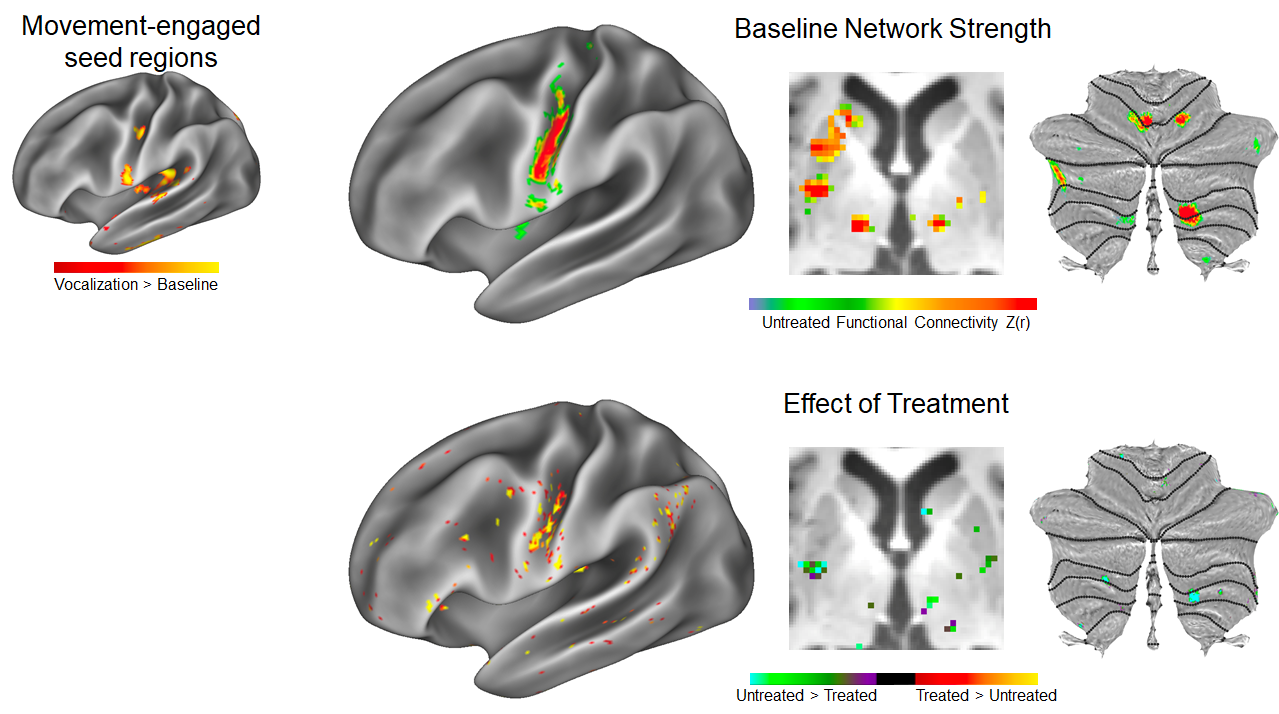Category: Dystonia: Pathophysiology, Imaging
Objective: Determine therapeutic effects of botulinum toxin on functional connectivity in individuals with task-specific dystonia.
Background: Isolated task-specific dystonia occurs during specific activities, but not at rest. Current therapeutic gold standards rely on recurring botulinum toxin injections. Therapeutic advancement requires improved understanding of neural mechanisms related to adaptive treatment response. Resting-state fMRI measures brain network functional connectivity (FC), where botulinum toxin therapy may alter FC in patients with non-task-specific dystonia. However, intra-scan movement potentially confounds interpretation. Furthermore, group averaging combines regions with and without dysfunction across patients and may fail to detect effects localized to individual-specific brain regions.
Method: We conducted a treatment response application of precision functional mapping (PFM) in patients with task-specific dystonia (writer’s cramp & laryngeal dystonia). PFM involves repeated collection of fMRI data in the same patient to characterize individual-specific brain network organization without averaging across patients. We collected 125 minutes rs-fMRI/40 minutes task fMRI in each patient both before and after successful therapeutic botulinum toxin. Tasks included impairment-specific motor tasks (vocalization; hand movement). Within each individual, we compared task activation and FC before and after successful therapeutic botulinum toxin.
Results: PFM allowed us to 1) determine task activated somatomotor functional network in individuals, and 2) detect highly localized changes in individual’s task engagement and brain network connectivity that related to successful therapeutic intervention. In pre-treatment conditions, the impairment-specific motor task engaged localized regions of M1 that were more strongly engaged after treatment. These task-related regions exhibited strong FC to somatomotor, striatal, and cerebellar regions. After successful treatment, FC increased within cortex but decreased in subcortical structures.
Conclusion: PFM in task-specific focal dystonia offers advantages to understand individualized network alterations in response to botulinum toxin, and thus sheds light on pathophysiologic mechanisms. Altered treatment related FC in somatotopically specific regions might represent potential target engagement sites for future therapeutic trials.
To cite this abstract in AMA style:
E. Gordon, K. Matthews, A. Meyer, S. Norris. Individual-specific brain functional connectivity mapping of therapeutic response in task-specific focal dystonia [abstract]. Mov Disord. 2023; 38 (suppl 1). https://www.mdsabstracts.org/abstract/individual-specific-brain-functional-connectivity-mapping-of-therapeutic-response-in-task-specific-focal-dystonia/. Accessed December 29, 2025.« Back to 2023 International Congress
MDS Abstracts - https://www.mdsabstracts.org/abstract/individual-specific-brain-functional-connectivity-mapping-of-therapeutic-response-in-task-specific-focal-dystonia/

